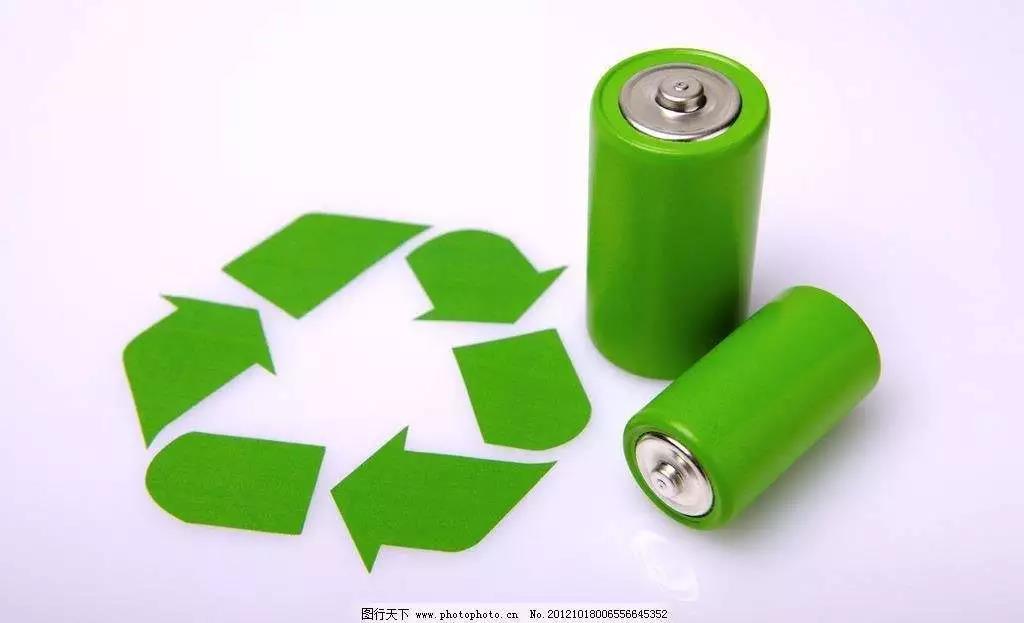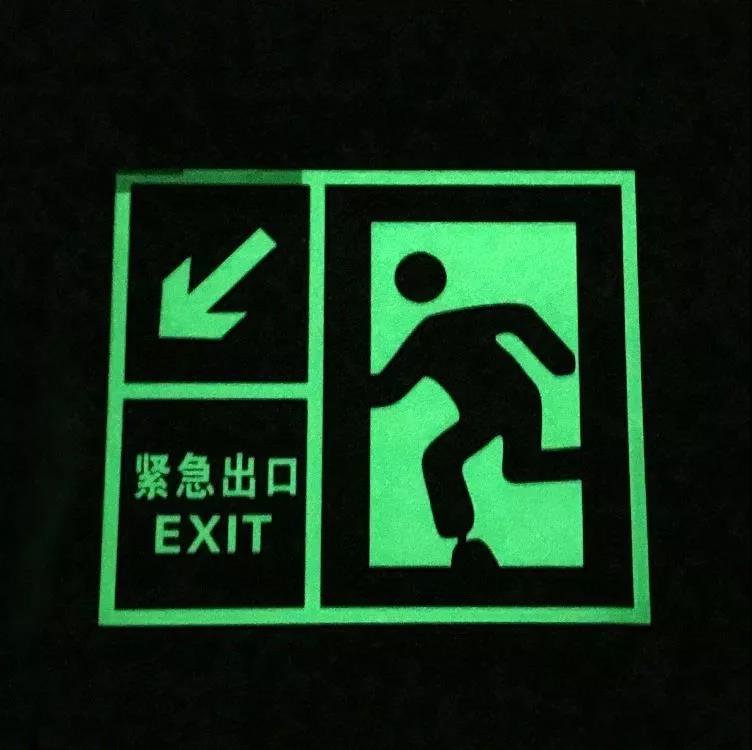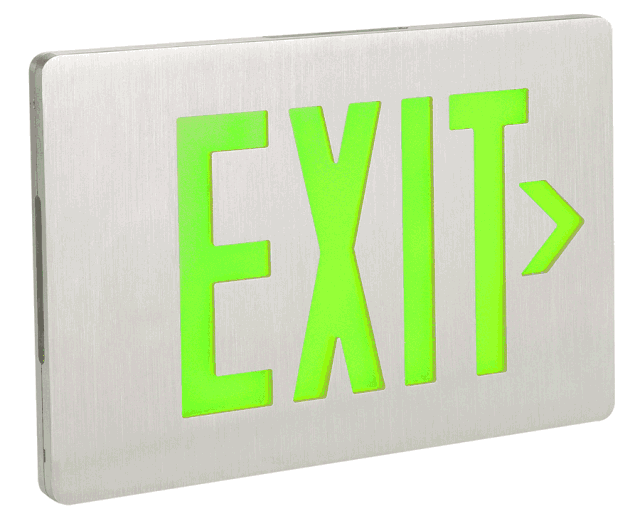出口标示牌 革命科技再进化
类别:材料工艺
发布时间:2018-08-23
译文:
对于努力去满足消防和安全法规的建筑物业主和管理者来说,将发光二极管(LED)照明效率与新型光致发光(PL)材料相结合的“双技术”出口标示牌能够帮助提高可供数十年使用的可靠性和性能。
这种混合方法将两种既定的出口标示牌技术整合在一个单一的单元中。在正常的功率条件下,标志由高效率的LED点亮。当电源熄灭时,由光致发光材料制成的半透明出口模板扩散装置提供照明。在向标示牌供电时,它由LED充电。
出口标示要求经常规定在低光照条件下安装出口标示。这个问题再加上诸如占用传感器等节能策略,使得使用传统PL标示和实现符合规范成为不可能。认识到这个问题,一些应急照明生产商现在提供先进和双重技术的选择,利用内部LED发光材料“充电”,而不是依靠外部来源。
这可以确保出口标示牌的可见性,而不管功率状况。这种可靠性提高的双重技术也具有显著的副作用 —它消除了对备用电池的需求,久而久之降低了与测试、维护或替换出口标牌相关的一些成本。
电池问题
传统意义上,出口标示包括内部电池以便在电源断电时为产品供电,但电池依旧是这些系统中最严重的故障。电池的使用寿命通常为在必须被更换之前的五至七年,当电池因腐蚀和过热而损坏时,电池寿命较短。
出口标示必须符合监管机构的多项标准。其中最值得注意的是,美国国家消防协会(NFPA)101的 “生命安全法规” ——要求可靠的光源和至少90分钟的应急照明(如果建筑物的电源熄灭)和美国保险商实验室(UL)924,应急照明和发电设备的安全标准。
为了满足这些规范的要求,带有备用电池的标牌必须每30天进行一次测试,这种做法通常涉及派遣维护人员爬上梯子并按下一个小按钮以确认电池仍处于工作状态。

例如,这些标示在建筑物占用期间需要一个激活光源来照射它们。通常现有的光线不足以给光致发光材料充电,特别是节能建筑标准(如加利福尼亚州第24号标准)导致光线变暗或在不使用时被频繁关闭。
当光线不足时,光致发光标示不能按照所需标准照明,并且可能造成严重的安全隐患。
组合更好
混合方式将技术结合在一起,提供更可靠的照明,无论电源是开或者关。然而,设计这样单元的结果是远比简单地把它们放在一个单一的建筑固定装置中复杂。
一种设计方法是利用内部LED对PL材料进行充电,以确保其在30米(100英尺)的观测距离内始终可见至少90分钟 ——电子标示的正常标准。
由于没有电池每月检查,这些类型的单元维护成本较低,预计运转20年或更久。许多由职业安全与健康管理局(OSHA)、NFPA 101、NFPA 70、国家电气代码(NEC)和UL 924批准。

典型的依靠电池供电的LED出口标示使用约4瓦特的功率,而混合发电装置消耗大约一半的功率(小于2瓦)。这是由于独特的电子驱动电路提供电流控制和保护,有助于确保最佳的LED效率和使用寿命。
消除对电池的依赖对环境也是有利的,因为电池的制造和处置都涉及有毒化学品。
尽管LED技术已经改进到可以持续20多年的程度,但电池技术并不总是与时俱进。这可能是出口标示的可靠性和维护的薄弱点。混合LED发光技术消除了这种责任,几十年来提供了更可靠的操作。
原文:
This hybrid approach combines two established exit sign technologies in a single unit. During normal power conditions, the sign is illuminated with highly efficient LEDs. When the power goes out, a translucent exit stencil diffusor made of photoluminescent material provides the illumination. This is charged by the LEDs while electric power is provided to the sign.
Dual-technology exit signs with light-emitting diodes (LED) and photoluminescence (PL) deliver reliable, maintenance-free operation for decades.
Egress marking requirements often dictate the installation of exit signs in locations with low-light conditions. This problem, coupled with energy conservation strategies such as occupancy sensors, can make it impossible to use traditional PL signs and achieve code compliance. Recognizing this problem, some emergency lighting manufacturers now offer advanced, dual-technology options utilizing internal LEDs to “charge” the photoluminescent material, rather than relying on an external source.
This ensures the exit sign’s visibility, no matter the power conditions. The increased reliability of this dual technology also has a significant side benefit—it eliminates the need for battery backup, reducing some of the costs related to testing, maintaining, or replacing exit signage over time.
The dual technology approach eliminates the need for backup power for the exit sign, whether through an internal battery or an external inverter/generator. This significantly increases reliability, simplifies maintenance, and reduces total costs.
The battery problem
Traditionally, exit signs include internal batteries to power the product in case of power outage, yet batteries remain the highest point of failure in these systems. Batteries typically have a lifespan of five to seven years before they must be replaced, and less when damaged by corrosion and overheating.
Exit signs must meet a number of standards from regulatory agencies. This includes, most notably, the National Fire Protection Association (NFPA) 101, Life Safety Code—which requires a reliable source of light and at least 90 minutes of emergency light if the building’s power goes out—and Underwriters Laboratories (UL) 924, Standard for Safety of Emergency Lighting and Power Equipment.
To meet these code requirements, signage with backup batteries must be tested every 30 days, a practice that typically involves sending a maintenance worker to climb a ladder and push a small button to confirm the batteries are still in working order.
In reality, these guidelines are not always followed. So if the battery fails, it is often not known until an actual power outage. If the sign fails to illuminate fully, or at all, when it is most needed, it could constitute a major life safety issue and even potential liability.
Photoluminescent signs
Standard photoluminescent exit signs have been in use for more than a decade. However, as a standalone technology, this has limitations.
For example, such signs require an activating light source to shine on them during all times of building occupancy. Often the available light is not sufficient to charge the photoluminescent material, particularly as energy efficient building standards such as California’s Title 24 lead to lights being dimmed or switched off more frequently when not in use.
When insufficient light is available, photoluminescent signs fail to illuminate to the required standards and could pose a serious safety hazard.
Better in combination
The hybrid approach combines technologies to provide even more reliable illumination, whether the power is on or off. However, designing such units turned out to be far more complex than simply putting both in a single architectural fixture.
One design approach utilizes internal LEDs to charge the PL material to ensure it is visible at all times at a 30-m (100-ft) viewing distance for a minimum of 90 minutes—the normal standard for electric signs.
Since there is no battery to check on a monthly basis, these types of units cost less to maintain and are expected to perform for 20 or more years. Many come with Occupational Safety and Health Administration (OSHA), NFPA 101, NFPA 70, National Electric Code (NEC), and UL 924 approvals.
Special LEDs emit the specific wavelength of light required to optimally charge the photoluminescent material so it provides the proper illumination to meet code requirements.
Cost savings
There are other benefits to this hybrid approach as well, which costs only nominally more than traditional LED signage.
The typical battery-reliant LED exit signs use about 4 watts of power whereas the hybrid unit consumes about half the power—less than 2 watts. This is due to a unique electronic driver circuit providing current control and protection, which helps ensure optimal LED efficiency and life.
Eliminating a reliance on batteries is also good for the environment, since both the manufacture and disposal of batteries involves toxic chemicals.
While LED technology has improved to the point where it can last more than 20 years, battery technology has not always kept pace. It can be the weak point in exit sign reliability and maintenance. Hybrid LED/photoluminescent technology eliminates this liability and provides a more reliable operation for decades.
Bill Lynch is president of Isolite, an independent emergency lighting manufacturer. Lynch graduated with a bachelor’s degree from Bowdoin College in 1977. In 2001, he became a member of the Underwriters Laboratories (UL) Standards Technical Panel for UL 924, Standard for Safety of Emergency Lighting and Power Equipment. He can be contacted at blynch@isolite.com.
文章来源:CSI(美国施工规范学会)
对于努力去满足消防和安全法规的建筑物业主和管理者来说,将发光二极管(LED)照明效率与新型光致发光(PL)材料相结合的“双技术”出口标示牌能够帮助提高可供数十年使用的可靠性和性能。
这种混合方法将两种既定的出口标示牌技术整合在一个单一的单元中。在正常的功率条件下,标志由高效率的LED点亮。当电源熄灭时,由光致发光材料制成的半透明出口模板扩散装置提供照明。在向标示牌供电时,它由LED充电。
出口标示要求经常规定在低光照条件下安装出口标示。这个问题再加上诸如占用传感器等节能策略,使得使用传统PL标示和实现符合规范成为不可能。认识到这个问题,一些应急照明生产商现在提供先进和双重技术的选择,利用内部LED发光材料“充电”,而不是依靠外部来源。
这可以确保出口标示牌的可见性,而不管功率状况。这种可靠性提高的双重技术也具有显著的副作用 —它消除了对备用电池的需求,久而久之降低了与测试、维护或替换出口标牌相关的一些成本。
双重技术方法消除了出口标示对备用电源的需求,无论通过内部电池还是外部换流器或发电机。这显着提高了可靠性,简化了维护并降低了总成本。

电池问题
传统意义上,出口标示包括内部电池以便在电源断电时为产品供电,但电池依旧是这些系统中最严重的故障。电池的使用寿命通常为在必须被更换之前的五至七年,当电池因腐蚀和过热而损坏时,电池寿命较短。
出口标示必须符合监管机构的多项标准。其中最值得注意的是,美国国家消防协会(NFPA)101的 “生命安全法规” ——要求可靠的光源和至少90分钟的应急照明(如果建筑物的电源熄灭)和美国保险商实验室(UL)924,应急照明和发电设备的安全标准。
为了满足这些规范的要求,带有备用电池的标牌必须每30天进行一次测试,这种做法通常涉及派遣维护人员爬上梯子并按下一个小按钮以确认电池仍处于工作状态。
实际上,并不总是遵循这些准则。因此如果电池出现故障,直到实际断电时才会知道。如果标示在其最被需要的时候未能充分照亮或根本无法照亮,可能构成重大生命安全问题甚至潜在责任。

发光标示
标准的发光出口标示已被使用了十多年。但是,作为独立的技术,这具有局限性。例如,这些标示在建筑物占用期间需要一个激活光源来照射它们。通常现有的光线不足以给光致发光材料充电,特别是节能建筑标准(如加利福尼亚州第24号标准)导致光线变暗或在不使用时被频繁关闭。
当光线不足时,光致发光标示不能按照所需标准照明,并且可能造成严重的安全隐患。
组合更好
混合方式将技术结合在一起,提供更可靠的照明,无论电源是开或者关。然而,设计这样单元的结果是远比简单地把它们放在一个单一的建筑固定装置中复杂。
一种设计方法是利用内部LED对PL材料进行充电,以确保其在30米(100英尺)的观测距离内始终可见至少90分钟 ——电子标示的正常标准。
由于没有电池每月检查,这些类型的单元维护成本较低,预计运转20年或更久。许多由职业安全与健康管理局(OSHA)、NFPA 101、NFPA 70、国家电气代码(NEC)和UL 924批准。
特殊LED发出特定波长的光线,以便发光材料进行最佳充电,从而提供适当的照明以满足规范要求。

节约成本
这种混合方法还有其他好处,仅在名义上比传统LED标示成本高。典型的依靠电池供电的LED出口标示使用约4瓦特的功率,而混合发电装置消耗大约一半的功率(小于2瓦)。这是由于独特的电子驱动电路提供电流控制和保护,有助于确保最佳的LED效率和使用寿命。
消除对电池的依赖对环境也是有利的,因为电池的制造和处置都涉及有毒化学品。
尽管LED技术已经改进到可以持续20多年的程度,但电池技术并不总是与时俱进。这可能是出口标示的可靠性和维护的薄弱点。混合LED发光技术消除了这种责任,几十年来提供了更可靠的操作。
原文:
Dual-technology exit signs eliminate battery backup
For building owners and managers striving to meet fire and safety codes, “dual-technology” exit signs that combine the efficiency of light-emitting diode (LED) lighting with new photoluminescent (PL) materials can help increase reliability and performance over decades of use.This hybrid approach combines two established exit sign technologies in a single unit. During normal power conditions, the sign is illuminated with highly efficient LEDs. When the power goes out, a translucent exit stencil diffusor made of photoluminescent material provides the illumination. This is charged by the LEDs while electric power is provided to the sign.
Dual-technology exit signs with light-emitting diodes (LED) and photoluminescence (PL) deliver reliable, maintenance-free operation for decades.
Egress marking requirements often dictate the installation of exit signs in locations with low-light conditions. This problem, coupled with energy conservation strategies such as occupancy sensors, can make it impossible to use traditional PL signs and achieve code compliance. Recognizing this problem, some emergency lighting manufacturers now offer advanced, dual-technology options utilizing internal LEDs to “charge” the photoluminescent material, rather than relying on an external source.
This ensures the exit sign’s visibility, no matter the power conditions. The increased reliability of this dual technology also has a significant side benefit—it eliminates the need for battery backup, reducing some of the costs related to testing, maintaining, or replacing exit signage over time.
The dual technology approach eliminates the need for backup power for the exit sign, whether through an internal battery or an external inverter/generator. This significantly increases reliability, simplifies maintenance, and reduces total costs.
The battery problem
Traditionally, exit signs include internal batteries to power the product in case of power outage, yet batteries remain the highest point of failure in these systems. Batteries typically have a lifespan of five to seven years before they must be replaced, and less when damaged by corrosion and overheating.
Exit signs must meet a number of standards from regulatory agencies. This includes, most notably, the National Fire Protection Association (NFPA) 101, Life Safety Code—which requires a reliable source of light and at least 90 minutes of emergency light if the building’s power goes out—and Underwriters Laboratories (UL) 924, Standard for Safety of Emergency Lighting and Power Equipment.
To meet these code requirements, signage with backup batteries must be tested every 30 days, a practice that typically involves sending a maintenance worker to climb a ladder and push a small button to confirm the batteries are still in working order.
In reality, these guidelines are not always followed. So if the battery fails, it is often not known until an actual power outage. If the sign fails to illuminate fully, or at all, when it is most needed, it could constitute a major life safety issue and even potential liability.
Photoluminescent signs
Standard photoluminescent exit signs have been in use for more than a decade. However, as a standalone technology, this has limitations.
For example, such signs require an activating light source to shine on them during all times of building occupancy. Often the available light is not sufficient to charge the photoluminescent material, particularly as energy efficient building standards such as California’s Title 24 lead to lights being dimmed or switched off more frequently when not in use.
When insufficient light is available, photoluminescent signs fail to illuminate to the required standards and could pose a serious safety hazard.
Better in combination
The hybrid approach combines technologies to provide even more reliable illumination, whether the power is on or off. However, designing such units turned out to be far more complex than simply putting both in a single architectural fixture.
One design approach utilizes internal LEDs to charge the PL material to ensure it is visible at all times at a 30-m (100-ft) viewing distance for a minimum of 90 minutes—the normal standard for electric signs.
Since there is no battery to check on a monthly basis, these types of units cost less to maintain and are expected to perform for 20 or more years. Many come with Occupational Safety and Health Administration (OSHA), NFPA 101, NFPA 70, National Electric Code (NEC), and UL 924 approvals.
Special LEDs emit the specific wavelength of light required to optimally charge the photoluminescent material so it provides the proper illumination to meet code requirements.
Cost savings
There are other benefits to this hybrid approach as well, which costs only nominally more than traditional LED signage.
The typical battery-reliant LED exit signs use about 4 watts of power whereas the hybrid unit consumes about half the power—less than 2 watts. This is due to a unique electronic driver circuit providing current control and protection, which helps ensure optimal LED efficiency and life.
Eliminating a reliance on batteries is also good for the environment, since both the manufacture and disposal of batteries involves toxic chemicals.
While LED technology has improved to the point where it can last more than 20 years, battery technology has not always kept pace. It can be the weak point in exit sign reliability and maintenance. Hybrid LED/photoluminescent technology eliminates this liability and provides a more reliable operation for decades.
Bill Lynch is president of Isolite, an independent emergency lighting manufacturer. Lynch graduated with a bachelor’s degree from Bowdoin College in 1977. In 2001, he became a member of the Underwriters Laboratories (UL) Standards Technical Panel for UL 924, Standard for Safety of Emergency Lighting and Power Equipment. He can be contacted at blynch@isolite.com.
文章来源:CSI(美国施工规范学会)
